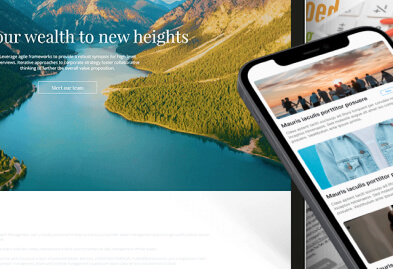
Personalization should go beyond attaching the first name in an email. Customers expect personalized content and want a human connection with organizations. Financial firms must implement content personalization strategies that force them to think about their audiences and the context for their various interactions; a prerequisite for delivering exceptional customer experiences! This 5 point plan to improving content personalization will help you improve content personalization and overall customer experience.
1.Know your audience
To provide a personalized experience to your audience, creating target personas will help clearly define an ideal client profile and understand the types of content that are most relevant and important. Building out these personas might seem like a waste of time but taking the time to identify who the ideal client is will only help attract that type of person to the business. Define things like age, income, family, lifestyle habits, likes, and interests. Go beyond defining the basic demographic characteristics. Specifically, knowing your target audience’s goals and challenges is extremely important in creating content that is personalized and will resonate.
2.Define which content should be personalized
Companies like Amazon are continuously finding new ways to personalize their content to their user. This type of personalization is becoming an expectation across other industries and shouldn’t be ignored or dismissed in financial services. According to KoMarketing, 47% of customers are looking for a personalized buying experience from brands. Personalization can go far beyond the obvious methods that people might be used to seeing. You can transform static into a personalized experience that reflects an advisor’s personal brand. Advisors can modify calls-to-action, engagement apps and hero banners to provide the optimal experience for their audience. Additionally, personalized content can be displaying the most relevant and important content based on behavior or device. Defining which content can and should be personalized will help to create a better overall experienced for advisors and their audience.
3.Create quality content on topics that people want to read
Using tools resources like Google Trends and BuzzSumo, content creators can easily find the topics that people are searching for and what topics are getting shared the most on social media. Leverage those topics as content ideas that will resonate with the target audience defined in step 1.
According to a recent podcast I heard, the #1 hack to converting visitors into leads is by leveraging quizzes. There are many tools available that make creating quizzes a simple process. Quizzes with personalized results are one way to provide high-quality personalized content. In exchange for the quiz results, visitors must provide their email, which then becomes a lead that can be followed up through lead nurturing.
4. Identify a distribution system that allows for content personalization
Research and demo content distribution tools that make content personalization simple and effective. Having a platform that connects your content creation efforts directly to your advisors’ websites will allow the reach of your content to be significantly amplified.
There are three options when it comes to implementing a content distribution system
- Build one using internal resources. This option is expensive for research, development, and maintenance.
- Purchase a tool. This can be very expensive.
- Work with a third-party company which has succeeded in implementing content distribution systems for financial companies. By partnering with an expert in marketing technology for financial services, the maintenance and improvement are the responsibility of the third company.
5. Use Analytics to Determine How Content Personalization Is Working
Understanding how content personalization is working for your business and how to improve is crucial for success. If the way you have attempted to personalized content is not driving results than personalization may not be working. Without a clear understanding, your audience could be receiving content that is not relevant to their needs. Set up an enterprise analytics dashboard to make it easy to see how content personalization is working or not working. Make it a habit to review what’s working and what’s not to ensure there are no wasted efforts in content created and personalization.
Remember that personalization isn’t a project but a journey that should continue to evolve. Staying at the status quo won’t cut it as your audience continues to demand greater personalization.











